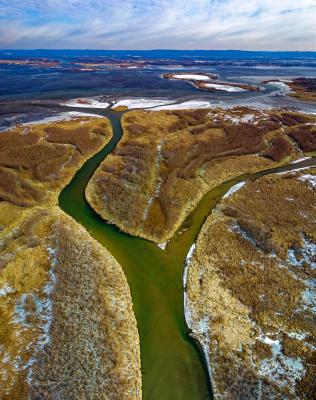Exploring Hydrologic Predictions and Uncertainty with CLM5 across the United States
Climate change and human activities significantly impact water resources, necessitating accurate water flow predictions. The Community Land Model version 5 (CLM5) simulates water resource responses to these changes, but uncertainties in its parameters can affect accuracy. This study assesses CLM5's default streamflow prediction performance across various US regions and identifies influential parameters. Results indicate varying performance, with poorer predictions in arid areas. Parameter uncertainty effects are complex, depending on region, timescale, and flow regime. These findings can enhance future water resource predictions and guide hydrologic studies using CLM5.
Researchers discovered limitations in the Community Land Model version 5 (CLM5) for predicting streamflow, particularly in arid regions like the Southwest and Central U.S. This study is the first to examine the effects of parameter uncertainty on CLM5's streamflow predictions across various regions, timescales, and flow regimes. The findings show that hydrologic parameter uncertainty significantly impacts CLM5's predictions, with varying effects across U.S. regions. Improving the model's accuracy can benefit climate science, hydrology, and environmental management.
Recent research has explored the effects of parametric uncertainty on the Community Land Model version 5 (CLM5) hydrologic predictions across regions, timescales, and flow regimes. The study benchmarks CLM5 streamflow predictions for 464 headwater basins in the conterminous United States (CONUS) and evaluates the performance of default hydrologic parameters. The results show that CLM5 streamflow predictions using default parameters are vulnerable to poor performance, particularly in the arid Southwest and Central U.S. regions. Hydrologic parameter uncertainty strongly affects CLM5 streamflow predictions, with complex variations across U.S. regions, timescales, and flow regimes. Surface runoff and soil water parameters have the largest effects on simulated high flows, while canopy water and evaporation parameters significantly impact the water balance. The findings can aid future CLM5 parameter calibration efforts by reducing the dimensionality of the problem and providing insights on the most sensitive parameterized processes for a given application's focus.

